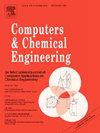Multi-scale causality in active matter
IF 3.9
2区 工程技术
Q2 COMPUTER SCIENCE, INTERDISCIPLINARY APPLICATIONS
引用次数: 0
Abstract
Deciphering how local interactions drive self-assembly and multi-scale organization is essential for understanding active matter systems, such as self-organizing bacterial colonies. This study combines topological data analysis with causal discovery to capture the complex, hierarchical causality within these dynamic systems. By leveraging the Euler characteristic as a topological descriptor, we reduce high-dimensional, multi-scale data into essential structural representations, enabling efficient, meaningful analysis. Through causal discovery methods applied to the topology of these dynamic, multi-scale structures, we reveal how localized bacterial interactions propagate, guiding global organization in systems with both homogeneous and heterogeneous ordering. The findings indicate that, while ordering patterns may differ, the mechanisms underlying multi-scale self-assembly remain consistent, with information flowing primarily from local, highly-ordered structures. This framework enhances understanding of self-organization principles and supports applications requiring scalable causal analysis in complex data environments across natural and synthetic active matter.
活性物质的多尺度因果关系
破译局部相互作用如何驱动自组装和多尺度组织对于理解活性物质系统(如自组织细菌菌落)至关重要。本研究将拓扑数据分析与因果发现相结合,以捕捉这些动态系统中复杂的、分层的因果关系。通过利用欧拉特征作为拓扑描述符,我们将高维、多尺度数据简化为基本的结构表示,从而实现高效、有意义的分析。通过应用于这些动态、多尺度结构的拓扑结构的因果发现方法,我们揭示了局部细菌相互作用如何传播,在同质和异质有序的系统中指导全局组织。研究结果表明,尽管有序模式可能不同,但多尺度自组装的机制是一致的,信息主要来自局部的、高度有序的结构。该框架增强了对自组织原理的理解,并支持需要在跨天然和合成活性物质的复杂数据环境中进行可扩展因果分析的应用程序。
本文章由计算机程序翻译,如有差异,请以英文原文为准。
求助全文
约1分钟内获得全文
求助全文
来源期刊

Computers & Chemical Engineering
工程技术-工程:化工
CiteScore
8.70
自引率
14.00%
发文量
374
审稿时长
70 days
期刊介绍:
Computers & Chemical Engineering is primarily a journal of record for new developments in the application of computing and systems technology to chemical engineering problems.
 求助内容:
求助内容: 应助结果提醒方式:
应助结果提醒方式:


